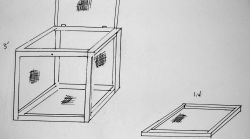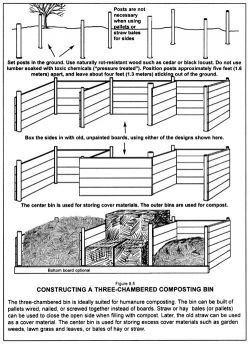Halifax Media Co-op
News from Nova Scotia's Grassroots
Compost, the beating heart of the garden
Most homes, in my experience, do not keep compost on site for the garden, electing to send it away in the green bin. If you have a garden, you need to have on-site compost. Here's why.
Composting corrects nutrient mining from farms by cities
One could consider composting to be a process of enriching your own land with fertility you've bought from farms. You've only eaten it first. When you send away your compost, the city profits from your organics, which are then sold to landscaping companies to fertilize ornamental gardens.
During the second world war and before, micronutrients (vegetables and fruits giving vitamins and minerals) used to be produced at home, while macronutrients (carbs, fats and protein-and yes, fat is a nutrient, we need it to survive) were grown in the more spaceous lands of the agricultural hinterland and brought into cities.
This meant that foods that demand a higher nutrient input, vegetables, were produced closer to home, where the nutrients could ultimately be composted back into the soil. Foods like grains or meats returned much of their fertility back to the farm's soil as chaff or manure and hides and other unused body, with only part of their total value being sent into the city. This represented a more economical transfer of soil nutrients, with less being sent from farms into cities.
Compost reduces the effects of acid rain
I worked at the home of one client who had gardened and home-composted on the Halifax peninsula for three decades. She had her garden soil tested by the Agricultural College at Truro and discovered that her soil was chemically neutral. No small feat in a part of the country with acidic bedrock and industrially produced acid rain. I credit the compost and the constant groundcover of perennial and self-seeding annual plants, even though those plants were almost all ornamental.
One reason might have been a good cationic exchange capacity, the process by which plants acquire the minerals they need. Basically plants break down water (H2O) into an H+ and an OH-. Their roots will hold out the OH- , wave it around, and hope to grab a K+ or Ca2+ atom or molecule, securing those atoms they need to live from their soil. Cationic exchange capacity is a measure of soil health, and the ability of plants to do this. It also makes the pH of the soil more stable, making sure it is neither too acidic nor too alkaline. A good fraction of humus and organic matter will increase the cationic exchange capacity of the soil. (wikipedia)
Compost provides the soil life plants need to make use of nutrients
Your soil can have fertility but without life to assist your garden, your plants will have a much more difficult time. The field of soil chemistry is immensely diverse, but simply stated, more living things in your soil means your soil aggregates more (clumps), providing room for more water absorption, more air, more habitat for yet more soil creatures and creating more surface area for cation exchange to take place. Soil organisms such as fungi and bacteria also form symbiotic relationships with plants, especially perennials and trees.
So if your garden isn't up to snuff or even if it is, consider growing your soil. After all it's your soil that grows your garden.
Here are some simple designs for compost boxes. I like to have space for a cubic yard in a box, with 4'wide walls. Three pallets lashed together are all you need to get started, but I like to use 1/4 inch mesh or "hardware cloth" to keep out all but the smallest animals.
The best deal I've found is at Pierceys on Robie street who sells 25 feet for around $30. I staple this to beams to make panels, and then assemble the panels. This design has the benefit of being modular, so if you move you can take it with you.
The site for the Halifax local of The Media Co-op has been archived and will no longer be updated. Please visit the main Media Co-op website to learn more about the organization.




